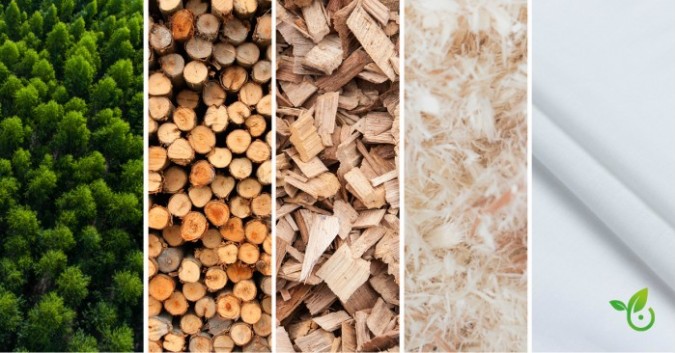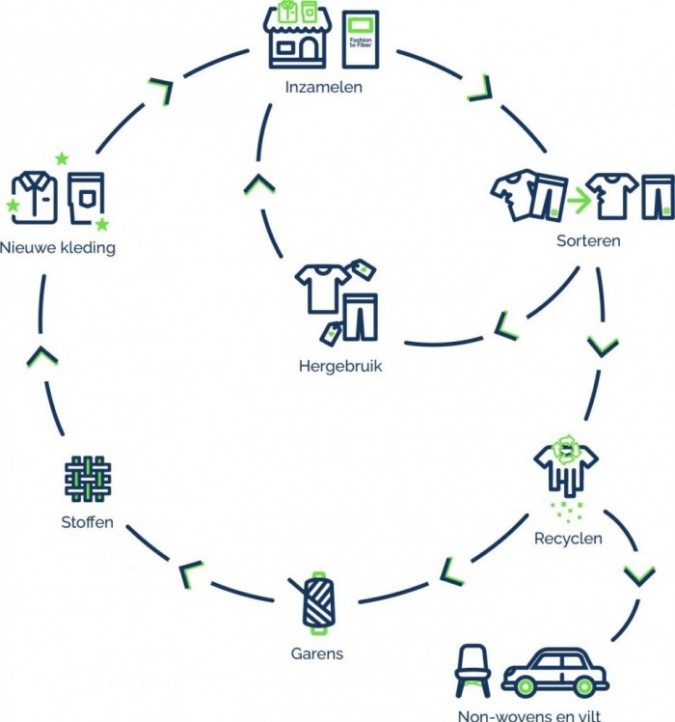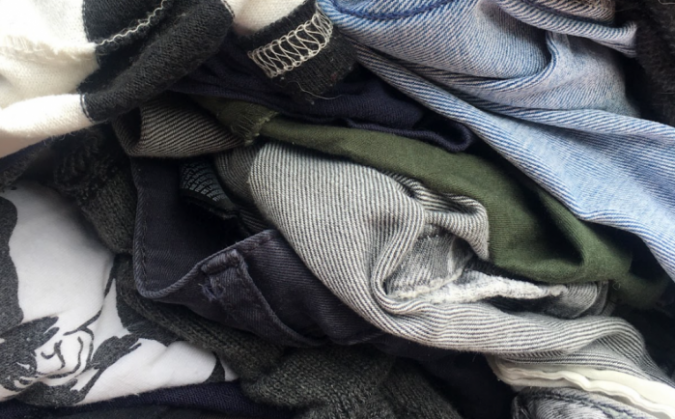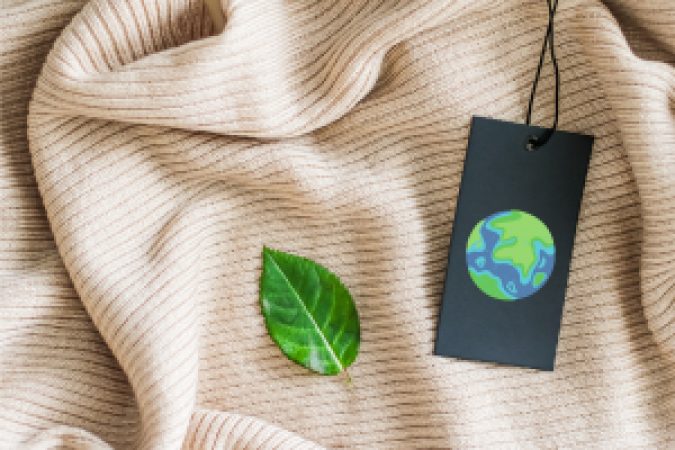Guidelines for a sustainable textile sector
Big challenges await
For today's textile companies, it is crucial to take responsibility. More so: ignoring sustainability and circularity can have major consequences for brand reputation. Fortunately, there are already numerous evolutions today that promote sustainability.
The distribution sector is betting on reusable packaging. Recycled materials and bio-based plastics are on the rise and new packaging is being designed with recycling in mind. For online purchases, sustainable packaging is being sought, while in physical shops classic plastic carrier bags are being avoided as much as possible. Yet there is still a long way to go towards a truly sustainable textile sector ...
Four important pillars for sustainability
Sustainability and circularity can be integrated in four areas in a textile company. Although they are separate concerns, they are indeed closely intertwined. For example, sustainable packaging involves much more than using fewer materials. You can use different raw materials, adjust customers' purchasing and disposal behaviour or approach the packaging process and logistics differently.
1. Raw materials
Everything starts with choosing the right raw materials. What are the options? What is the environmental impact of each raw material? And can the raw material be easily recycled? For workwear, zippers, buttons, any coatings, etc. can make the recycling process more difficult. Don't forget that many recycled textiles already exist and you can look at possible alternatives. How about clothing made of hemp fibre?
2. Production
There are several ways to make the production process more sustainable. Take a closer look at the prototypes, for instance. Can you work with a zero waste pattern design or partially digitise the samples? Also carry out thorough quality checks: colourfastness, fit, strength of joints, ... they all contribute to the quality and lifespan of clothing. Emotional value also plays a role. Those who are attached to a garment, for example a high-quality tailor-made suit, are less likely to discard it.
In effective production, it is important to monitor conditions closely. Are environmental laws respected? Is there no water wastage? Does production run on renewable energy? Local production is naturally easier to monitor in this respect. New production methods such as printing or 3D weaving in small runs are also a sustainable idea.

Packaging and transport are also important
3. Packaging
Packaging may not be the first thing you think of when thinking about sustainable textiles, but it can make a big difference. Clothes hangers, packaging bags, adhesive strips, labels ... they all have sustainable counterparts which, by the way, are available at Marisan’s.
- Clothes hangers are often discarded after transport. Therefore, ask the question whether hanging transport is really necessary? If so, perhaps the supplier can reuse the hangers or opt for a recyclable alternative, such as cardboard.
- Plastic packaging for individual items is sometimes indispensable, e.g. for long storage. In that case, choose recycled plastics or bio-based or biodegradable plastics from natural sources such as sugar cane or maize.
- Hang tags contain important info about the manufacturer, the material, ... but are usually discarded immediately. Recycled alternatives exist for the cardboard label, the plastic attachment can be replaced by hemp, flax or jute.
- Labels and tags with the size, washing instructions, ... can be made of organic cotton, but also, for example, of the same material as the garment. There are also options to avoid additional labels and have the info printed into the garment through tampon or screen printing.
4. Transport
Transport is the last pillar where sustainability can be gained. Companies that transport their own products often do so with half-empty trucks. Specialised transport companies can optimise their loads so that a truck never leaves empty. It is also a good idea to look into the possibilities of transport by train, ship, plane, bicycle, .... Synchronous transports are the ultimate goal here: you combine the advantages of all means to transport efficiently and sustainably.

Towards circularity
A circular textile sector is the pinnacle of sustainability. The combination of the above efforts is already a good start, but to make the textile sector fully circular, there are three main areas of focus:
1. Sustainable fibre choices: natural fibres can reduce the impact of fossil raw materials, but the properties are not always equivalent. Therefore, it is important to match fibres to their expected use, lifespan and end-of-cycle processing.
2. More research on microplastics emissions: synthetic clothing contains a lot of microplastics. Much research is needed to see how emissions of those microplastics can be reduced throughout the textile life cycle.
3. Optimise collection and recycling: to avoid using new raw materials again and again, better separate waste collection and high-quality re-use and recycling are crucial. From 01/01/25, separate collection of textile waste will therefore become mandatory in the EU.

Marisan as a partner in sustainability
From packaging over labels to attachments, sustainability is woven into our entire product range. That is why we like to think together with you about ways to win sustainability and efficiency. Matching the right product with the right raw material, we go for tailor-made solutions time and again!
Some possibilities:
● PCR-based LDPE and Coex bags as transport packaging
● Durable labels and emblems (woven, non-woven, other materials)
● Hang tags, attachments and guns
● Garment bags and totes
● Labelling and warehouse solutions
Sources for this article: KIDV, VITO and 'Purchase roadmap for circular textiles' (Hogeschool Gent).
